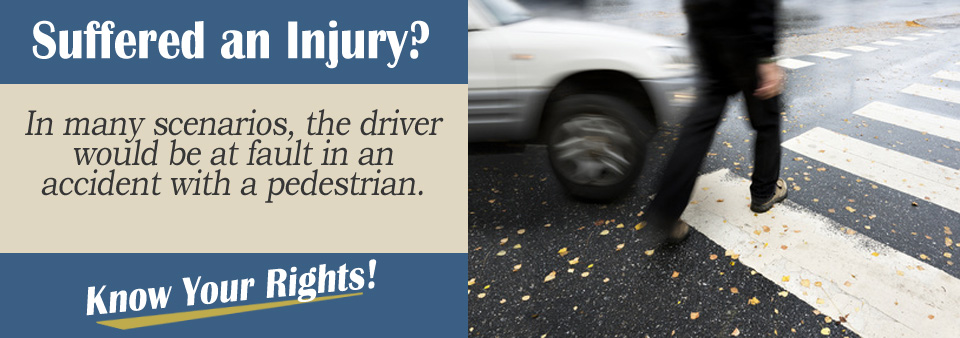If a pedestrian is hit by a car, the driver of the vehicle is usually to blame. However, there are a few rare scenarios in which the pedestrian might be to blame for the crash that resulted. Pedestrians must adhere to traffic laws as well and violating these laws could contribute to the crash and make the pedestrian at least partially at fault. The pedestrian does not always have right of way, as we often hear. And, when a pedestrian jaywalks or steps out into the path of the vehicle without any warning, he or she is at least partially at fault for the accident.
Sometimes both parties could be at fault. As an example, the pedestrian jaywalks, but the vehicle is traveling at an unsafe speed, so the driver cannot stop in time to keep from hitting the pedestrian. Both parties are equally to blame for the accident that resulted. Crossing against the traffic signal is also a sign of negligence and contributes to the crash. As an example, the sign says, “Do Not Walk” and the pedestrian proceeds on and into the path of the vehicle. If a pedestrian is intoxicated and enters the path of a motor vehicle, he or she is at least partially at fault for the crash.
Walking Where Pedestrians are Prohibited
If a pedestrian is in an area where pedestrians are prohibited and he or she is hit by a passing vehicle, then he or she might be completely at fault for the crash. As an example, if a bridge, highway, or causeway has posted that no foot traffic is allowed or that pedestrians are prohibited, and you go into those areas anyway, drivers will not expect you there and will not look out for you. In that case, the pedestrian might be held at fault for the entire incident and then be liable for all the damages that resulted.
Comparative Negligence
Most states use some form of comparative negligence for auto accidents and personal injury claims. Using this approach, the injured party can share some fault for their contribution to the accident. If pure comparative negligence is used, a person who is injured can recover compensation from the other at-fault party, but your damages will be reduced by your percentage at fault for the crash. If contributory negligence is used, you cannot recover compensation from the other party if you contributed at all to the accident that resulted. The kind of negligence that is used in your state plays a major role in the outcome of your claim.

Consult with a Personal Injury Attorney
If you have been involved in a pedestrian and motor vehicle accident, you should consult with a personal injury attorney about pursuing a personal injury claim. Complete the Free Case Evaluation Form on this page to have your details shared with an attorney in your state who will review your case and determine the best way to proceed.